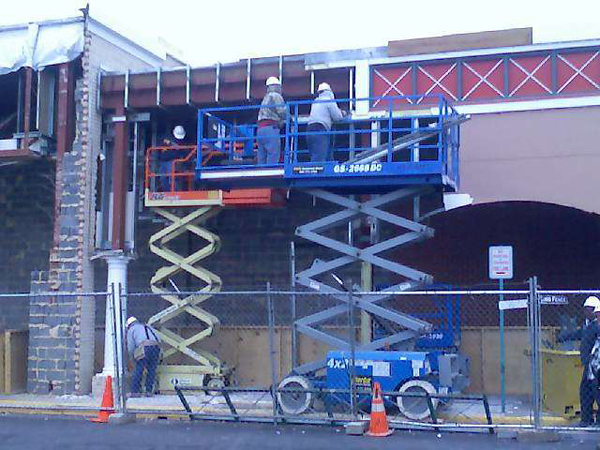What Type of Construction lifts is Right for Your Project?

Construction lifts are machines used to enable workers to reach high-up spots without building scaffolding. They are used for maintenance work on elevated structures as well as in warehouse and factory settings. Construction lifts all have wheeled and powered bases that can drive to the work location and a platform that elevates workers. With that in mind, there are an increasing number of lifts you should become familiar with. Not only does this ensure the safety of lift workers, but it also verifies whether or not you've chosen the right equipment for the task at hand.
Exploring Your Options
The first step in locating the right lift for your project is to determine the exact size, scope and scale of the job in question. You're probably familiar with scissor lifts, as they're amongst the most common and well-known lifts. Despite this, they're not right for every job. Scissors lifts are typically limited to movement within a vertical plane, so they're best for smaller construction projects.
Spider lifts, on the other hand, feature a platform supported by a number of different legs. These lifts are highly versatile, especially in the outdoors, as lift workers can adjust each leg independently of the others to accommodate for rough terrain.
Bucket lifts or trucks, sometimes called cherry-pickers, are great for their extended reach. However, since bucket on the end of the boom is rather small, workers have extremely limited space. This makes the bucket lift an impractical choice for labor-intensive or large-scale construction jobs.
Articulated boom lifts, or knuckle lifts, are typically better suited for manual construction and labor than their bucketed counterparts. Similar to the bucket truck, articulated boom lifts feature a larger work platform and greater reach. The articulated joints within the boom of the knuckle lift mean that these machines are much better suited for use in tight or cramped jobsites.
Determining Your Project Needs
To pick the best construction lifts, you must take the time to assess your specific project's needs. For instance, there's no sense in paying the added expense for an articulated boom lift when a common scissor lift will do. It's important to understand the capabilities — as well as the limitations — of each specific construction lift.
Next, try to figure out the exact height you or your employees will be working at. Spider and scissor lifts typically reach between 20 or 30 feet, while articulated boom lifts might span a distance of 80 feet. The articulation and increased mobility also lends itself to the efficiency of such models.
Take some time to consider the job site itself, too. Large knuckle lifts and bucket lifts might be impossible to fit indoors, while the average scissor lift will have difficulties navigating outdoor terrain. While you can almost always make special accommodations, the simple act of choosing the right tool for the job can save a lot of time, frustration and additional expense in the end.
Financing an Aerial Lift
Regardless of your intended usage, there's no getting around the fact that construction lifts are expensive. Depending on your exact needs, you might be able to save some money by renting a lift, as opposed to making an outright purchase.
You must consider several factors before making your final decision. The current financial status of your company, immediate usage needs and long-term expectations should all be weighed before committing to a rental or purchase.
Your ability to monitor and maintain your construction fleet should also be assessed when deciding whether to buy or rent an construction lift. For large organizations with dozens of vehicles, it might make more sense to buy the needed lift. Smaller companies, including startup construction agencies, might discover the costs of such equipment are far too high to warrant the added expense.
There is also the option of leasing a lift. If you're unsure of the exact timeframe of your project, or if you'll need to use your lift for a long period, leasing is typically more affordable than renting equipment on a day-to-day basis.